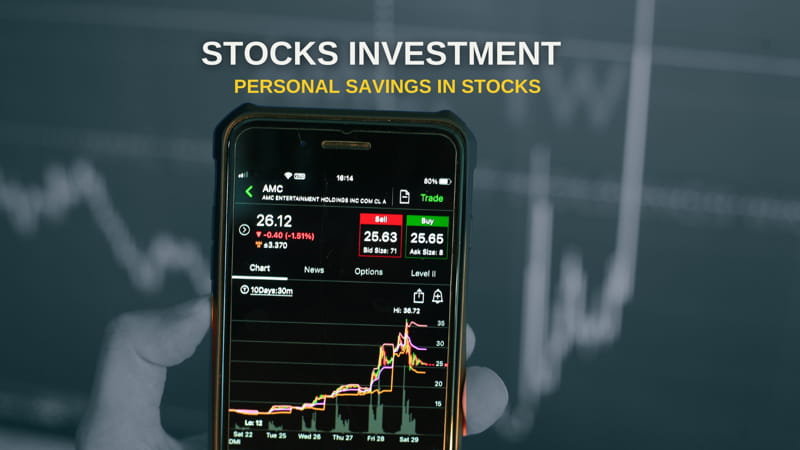Introduction: Why Investment In Stocks?
Investing in stocks can grow your money faster than savings accounts or bonds. For example, the S&P 500 has averaged 10% annual returns over the last century. But where do you start? This guide breaks down stock investing into bite-sized steps for absolute beginners. Let’s begin!
Step by Step Guide for Stocks Investment
Step 1: Set Clear Financial Goals
Q: Why do I need goals before investing?
A: Goals determine how and where you invest. Ask yourself:
- Short-term (1–3 years): Saving for a vacation? Stick to safer options like high-yield savings accounts.
- Long-term (5+ years): Retirement or buying a home? Stocks are ideal for long-term growth.
Pro Tip: Use the SMART framework (Specific, Measurable, Achievable, Relevant, Time-bound).
Example: “I’ll invest 300/monthinstockstogrow300/monthinstockstogrow50,000 in 10 years.”
Step 2: Build an Emergency Fund
Q: Why do I need cash before investing?
A: Stocks can be volatile. An emergency fund (3–6 months of expenses) protects you from selling investments during a market dip to cover sudden costs.
Where to Park It:
- High-yield savings accounts (e.g., Ally Bank: 4.25% APY).
- Money market funds (e.g., Vanguard Cash Reserves).
Step 3: Choose the Right Brokerage Account
Q: What’s a brokerage account?
A: It’s like a bank account for buying stocks.
Top Beginner-Friendly Platforms for 2024:
| Brokerage | Best For | Fees |
|---|---|---|
| Fidelity | Low-cost ETFs | $0 trades |
| Robinhood | Simple mobile app | $0 trades |
| Vanguard | Retirement accounts | $0 on ETFs |
| Webull | Advanced charts | $0 trades |
How to Open an Account:
- Provide personal info (name, address, Social Security Number).
- Link your bank account.
- Fund your account (start with 100–100–500).
Step 4: Learn the Basics of Stocks
Q: What’s a stock?
A: Owning a stock means owning a tiny piece of a company. If the company grows, your stock’s value grows too.
Key Terms Simplified:
- Dividend: A share of profits paid to you (e.g., Coca-Cola pays dividends quarterly).
- ETF: A bundle of stocks (e.g., SPY = 500 top U.S. companies).
- Bull Market: Prices rising. Bear Market: Prices falling.
Step 5: Start with Index Funds or ETFs
Q: What’s the safest way to invest?
A: Index funds/ETFs spread your money across hundreds of stocks, reducing risk.
Top Picks for 2024:
- VOO (Vanguard S&P 500 ETF): Mirrors the S&P 500.
- QQQ (Invesco Nasdaq ETF): Tech-heavy (Apple, Amazon).
- SCHD (Dividend ETF): Pays steady income.
How to Buy:
- Search the ETF ticker (e.g., “VOO”) in your brokerage app.
- Click “Buy,” enter the amount, and confirm.
Step 6: Research Individual Stocks (Optional)
Q: How do I pick good stocks?
A: Focus on companies you understand and use daily.
Checklist for Beginners:
- Profitability: Is revenue growing? (Check Yahoo Finance > “Financials”).
- Low Debt: Debt-to-equity ratio < 1.5 (lower = safer).
- Strong Leadership: CEOs with long-term vision (e.g., Microsoft’s Satya Nadella).
2024 Trends to Watch:
- AI Stocks: NVIDIA, Microsoft.
- Green Energy: NextEra Energy, Tesla.
Step 7: Invest Regularly (Dollar-Cost Averaging)
Q: Should I invest all my money at once?
A: No! Use dollar-cost averaging (DCA): Invest fixed amounts weekly/monthly to avoid market timing.
Example: Investing $500 monthly in VOO, regardless of price.
Benefits:
- Reduces stress during market swings.
- Lowers average cost over time.
Step 8: Monitor & Rebalance
Q: How often should I check my portfolio?
A: Limit yourself to once a quarter. Overchecking leads to panic selling.
Rebalancing Steps:
- Review your portfolio mix (e.g., 70% ETFs, 30% stocks).
- Sell assets that grew too much, buy underperformers to reset your balance.
Tool: Use M1 Finance’s auto-rebalance feature.
Step 9: Stay Patient & Avoid Common Mistakes
Q: What mistakes do beginners make?
A:
- Chasing “Hot” Stocks: Meme stocks (e.g., GameStop) often crash.
- Ignoring Fees: High fees eat returns. Stick to platforms with $0 commissions.
- Panic Selling: Markets rebound—the S&P 500 recovered from 2022’s crash in 2023.
Mantra: “Time in the market > Timing the market.”
Step 10: Scale Up with Advanced Strategies
Ready to Level Up? Try These (Optional):
- Dividend Investing: Buy stocks like Procter & Gamble for passive income.
- Roth IRA: Tax-free growth for retirement (contribution limit: $7,000/year in 2024).
- Robo-Advisors: Let algorithms manage your portfolio (e.g., Betterment, Wealthfront).
FAQs: Stock Investing for Beginners
Q1: How much money do I need to start?
A: Start with 100–100–500. Apps like Robinhood even let you buy fractional shares (e.g., $10 of Amazon).
Q2: Are stocks safe?
A: All investments carry risk. However, diversified ETFs (like VOO) are safer than individual stocks.
Q3: How do I earn money from stocks?
A: Two ways:
- Price Appreciation: Sell stocks for more than you paid.
- Dividends: Quarterly cash payments (e.g., Johnson & Johnson).
Q4: What’s the best time to invest?
A: The best time is now. Historically, early investors benefit more from compound growth.
Q5: Can I lose all my money?
A: Only if you:
- Invest in failing companies (e.g., bankrupt firms).
- Sell during a crash.
Q6: How do taxes work on stocks?
A:
- Short-term (<1 year): Taxed as regular income.
- Long-term (>1 year): 0–20% tax rate, based on income.
Tool: Use TurboTax to simplify filings.
Q7: Should I hire a financial advisor?
A: Not unless you have > $500k. Use low-cost ETFs and free tools first.
Q8: What’s a brokerage account vs. a retirement account?
A:
- Brokerage: For general investing (easy access to cash).
- IRA/401(k): For retirement (tax benefits but penalties for early withdrawals).
Conclusion: Start Small, Think Big
You don’t need to be a Wall Street expert to grow wealth in stocks. Follow these steps, stay patient, and let compound interest work its magic. Ready to begin? Open a brokerage account today—your future self will thank you.
Free Resource: Read our Side Hustle Income & Investment Ideas to track your progress!
Recommended Read: How to Turn Your Hobbies into a Profitable Side Hustle in 2025 and Beyond








One Response